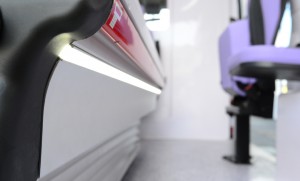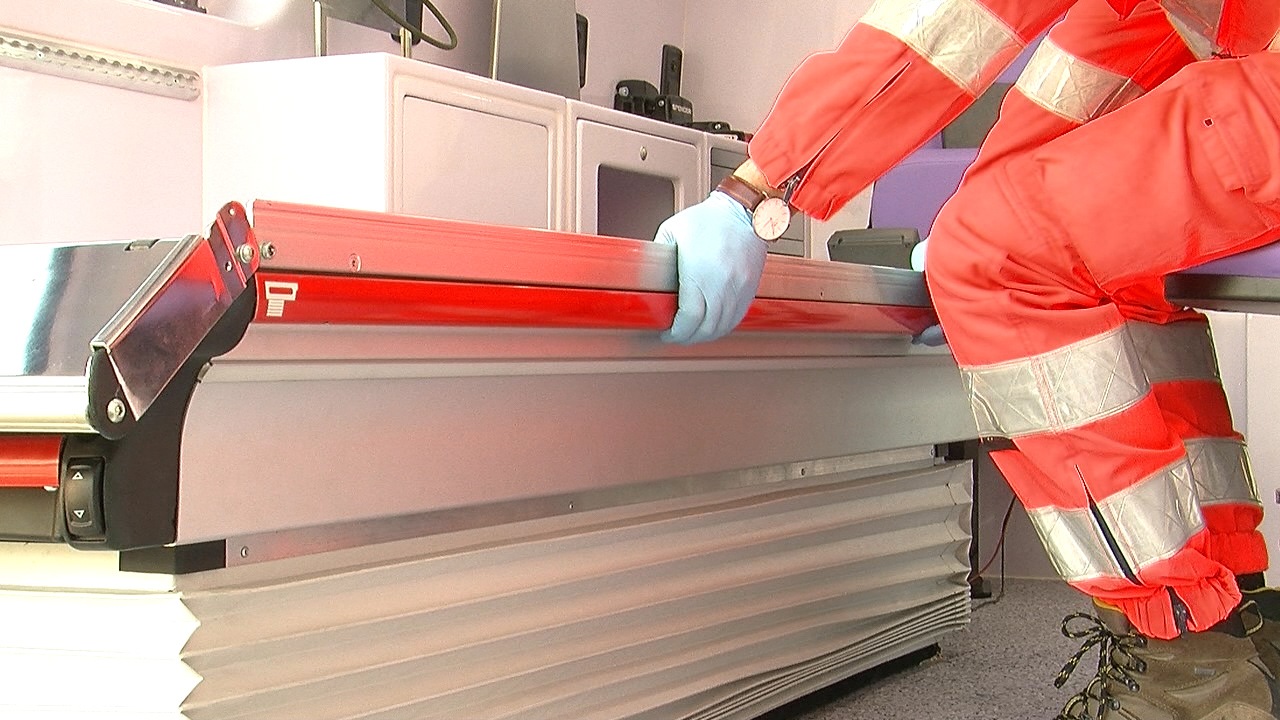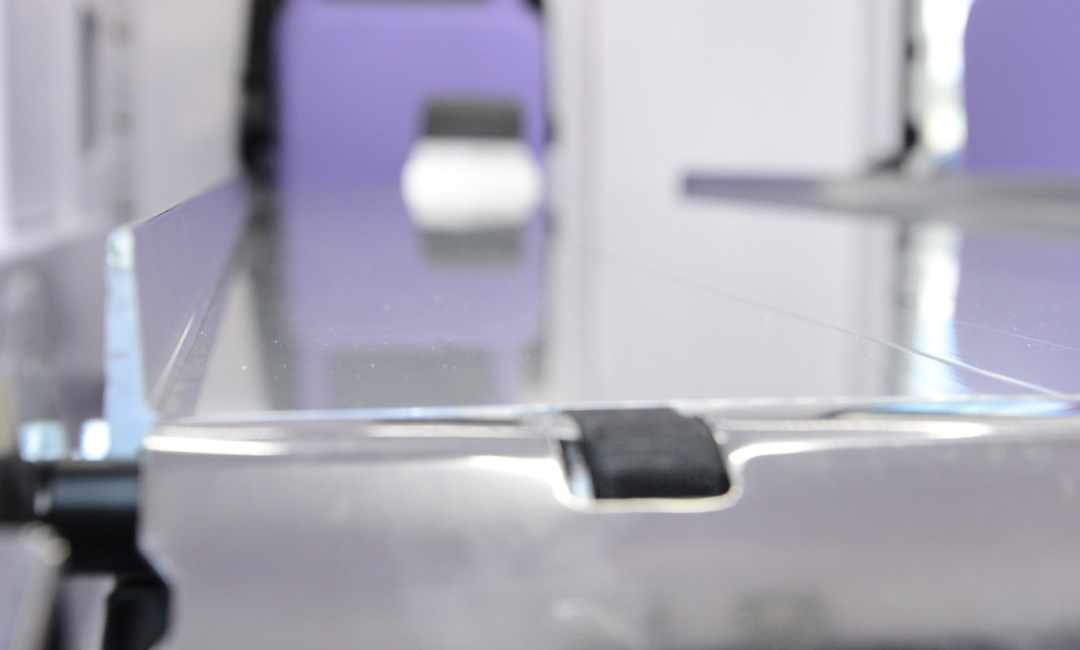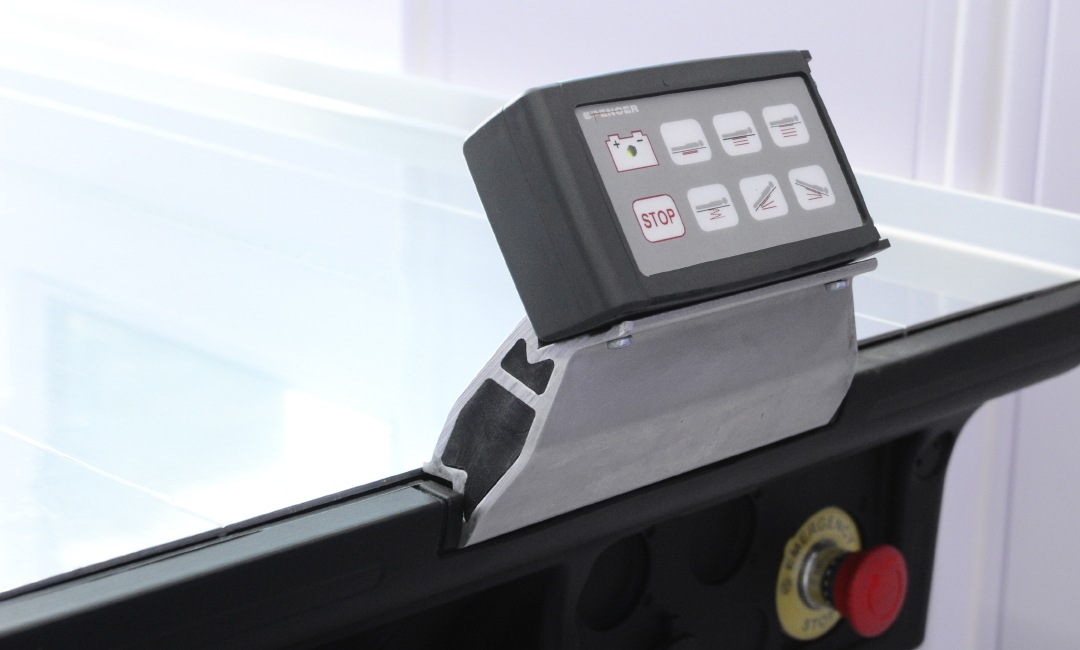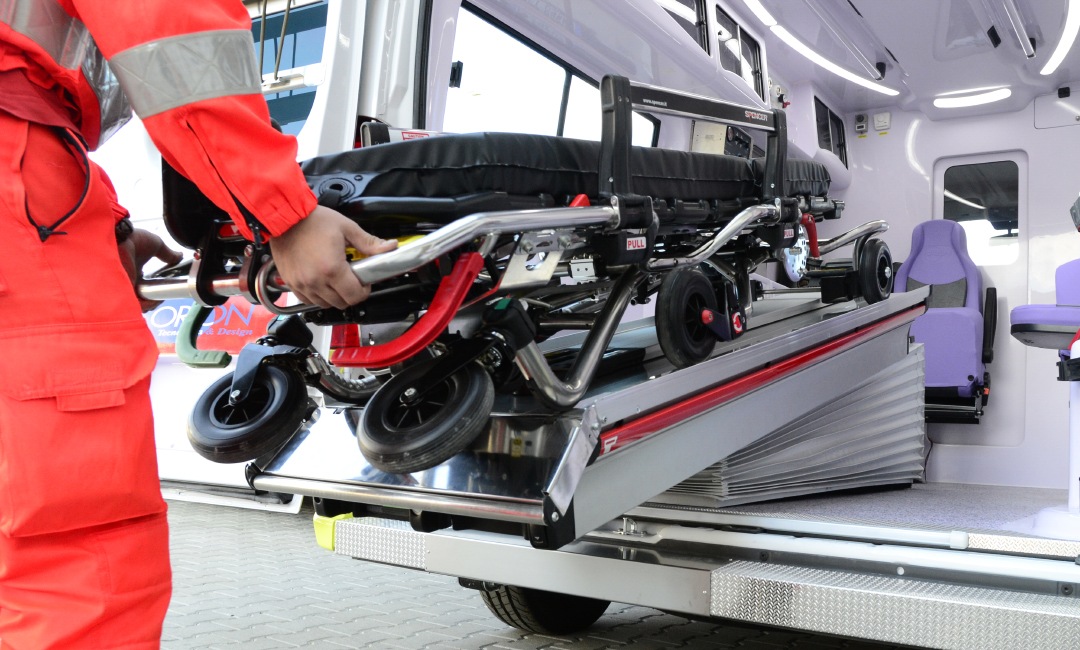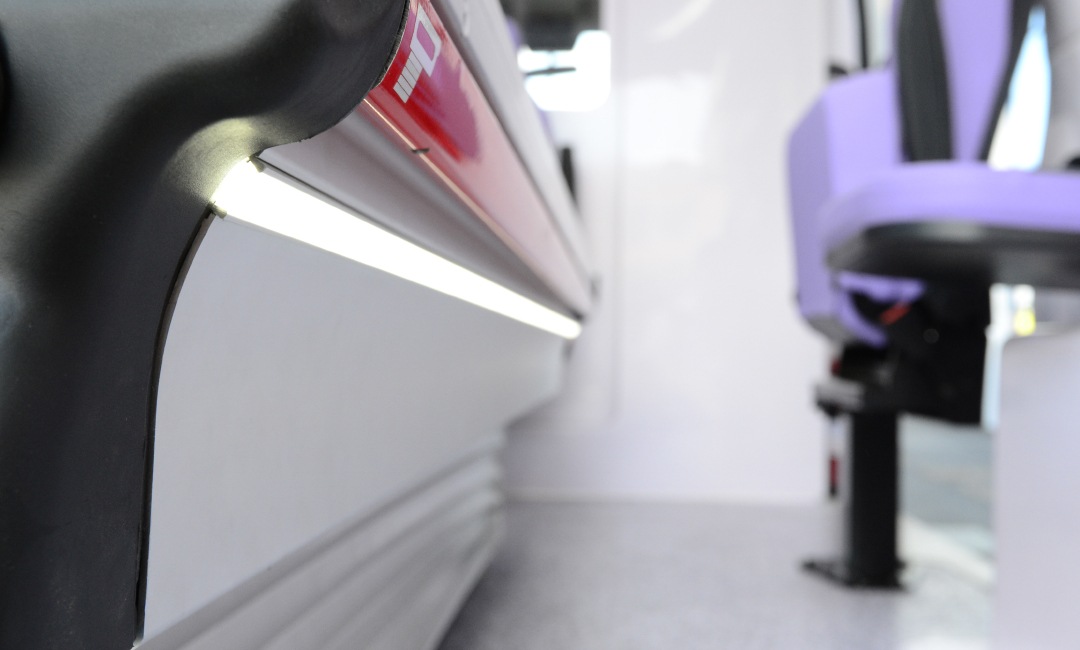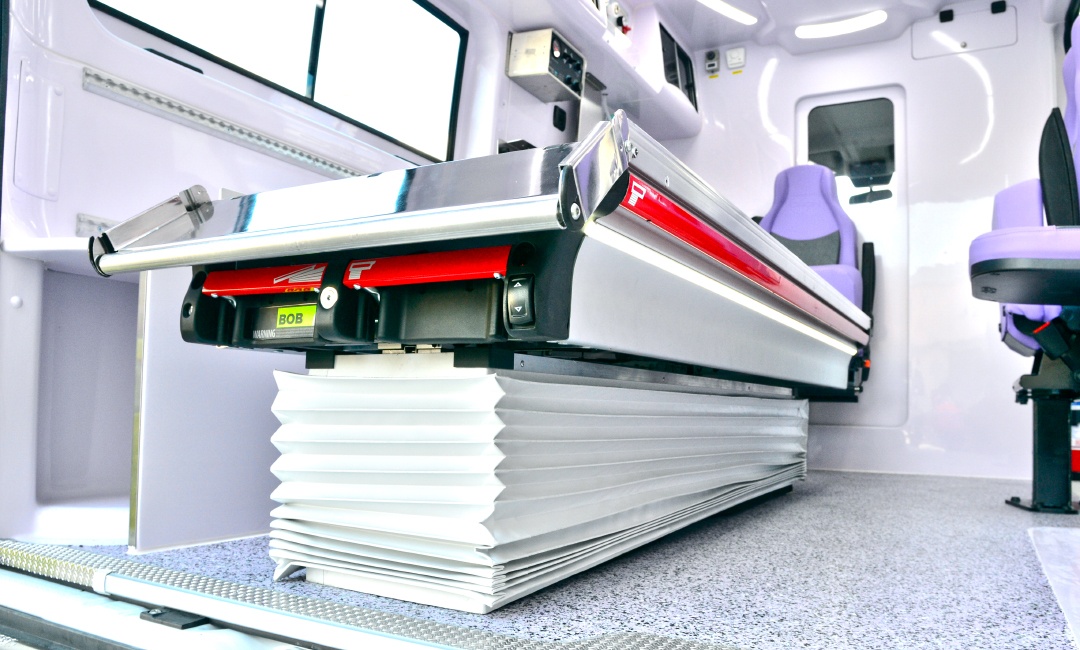
What about the ambulance stretcher support?
Loading and unloading patient from the ambulance is really important. But also safety, sanitisation and space are essential too. Don’t forget to find the right equipment for your ambulance, like stretcher support.
When an ambulance is sold to empower the fleet there are a good number of questions to solve. The first commandment you have when planning your new ambulance is “safety”. In this field, the ambulance stretcher support really makes the difference.
There’s an interesting guideline from the Department of Homeland Security (U.S.) and it reads as follows: EMS professionals routinely perform essential medical care as they stabilize patients at emergency scenes and provide treatment “en route” to medical facilities.
High injury and fatality rates among EMS Professionals underscore the need for safer and more resilient ambulance design and construction, more efficient patient compartment layouts that allow EMSP (EMS Professionals) to be seated and restrained while tending to patients, and ergonomically designed workspaces that keep EMSP and their patients safe and comfortable and EMSP productive while performing their tasks.
What kind of problems will I have to face with the new ambulance?
European ambulances and US ambulances are quite different and we don’t want to open discussions about which is better or worse. We want to discuss the patient’s position inside the ambulance and this article will turn around an important device: the ambulance stretcher support.
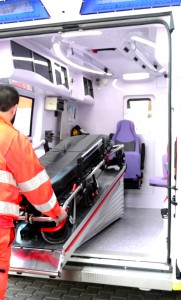
How the ambulance stretcher support could reduce complexities?
When you start to plan the design of your new ambulance, there are a lot of problems that need to be faced to choose the right elements for the patient compartment. Professionals don’t usually leave decisions about the equipment to the ambulance builders even though they can offer plenty of experience.
Their main attention tends to be focused on the safety of the ambulance. In the same way, the businessman has to focus his attention on the collateral but highly significant issues like the budget while the crew have to face the problems regarding the extremely important layout of the Ambulance’s patient compartment.
What advantages do I want to achieve? How the stretcher support can help me?
The most important issues for the crew’s experience are connected with the activities that EMS Professionals are consistently doing during their shift. This is the reason why a lot of EMS providers are creating specialized teams to plan the design of the work area in the patient compartment. Professionals in EMS know that the ambulance is THE OFFICE and it has to be equipped with some medical working tools and if your instruments are made for specific functions, why doesn’t anyone give space the same consideration?
Why is the patient’s position so important and how the stretcher support can help in this topic?
It is quite normal that EMS Professionals who are planning the new patient compartment apply different schemes but there is a focal rule: the job-to-be-done. It is a logic scheme for business that is also really useful when applied to EMS. Objects that you put in the ambulance must be there to produce advantages and reduce problems so the rule has to consider what you want from your compartment: The answer? Patient’s health.
Routine: does it improve your lives?![BOB-CURVA]()
When you plan your ambulance, it’s fundamental that you consider avoiding any trouble in the loading and unloading protocols while providing the best comfort that your devices can offer to the suffering patient that is being cared for. Last but not least, you have to be able to assist your patient easily, safely and without any hassle.
The first activity you have to focus on is how you are going to load and unload stretcher bound patients. The second is about operating on the patient during transport. The usual EMS Professional routine is:
- On-site: unload stretcher;
- load the patient on the stretcher;
- load stretcher on an ambulance;
- move stretcher support closer to the patient;
- move stretcher support away to open a secondary bay (or shaft);
- tilt, until, lift up or lock the stretcher platform position to assist the patient as needed;
- A&E: unload stretcher, leave patient and go back to HQ;
For these points, you could consider improving the crew’s activity every aspect of their routine with stretcher support. Remember Job-to-be-done?
- When I load the stretcher, I want something that will help me do it so I can reduce my fatigue.
- While I assist a patient, I have to be able to reach any part of his body if I want to do my job better.
- When I am positioned alongside the patient, I want something that allows me to find a good position so I can travel with comfort.
- Last but by no means least, when the patient is safely onboard, I want something that guarantees him bespoken comfort which will help him remain relaxed and reduce his anxiety.
Is the stretcher support the only way to make space in the European Ambulance?
The European Ambulances don’t have space for seats on both the right and the left of the patient. There is also a problem with the storage of secondary devices. But there’s also another important problem in the European ambulance regarding the crew’s safety and stretcher support like for example the Spencer BOB Stretcher Support can resolve it. The solution is its specific profile that makes space for the feet. A concave contour creates space that previously just didn’t exist in the ambulance. BOB allows the rescuer to remain seated with comfort, and able to enjoy all the benefits of a better posture.
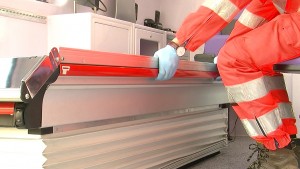 This stretcher support has another great feature that needs to be taken seriously into consideration. It can be moved sideways to allow a better approach to the patient. Movements which is triggered off by a long red handle. It runs right the way along with the platform and makes moving the patient easily. Another well thought of feature is the control panel, which lets you tilt backwards and forwards to assist you in intubation procedures or even just to increase the patient’s comfort.
This stretcher support has another great feature that needs to be taken seriously into consideration. It can be moved sideways to allow a better approach to the patient. Movements which is triggered off by a long red handle. It runs right the way along with the platform and makes moving the patient easily. Another well thought of feature is the control panel, which lets you tilt backwards and forwards to assist you in intubation procedures or even just to increase the patient’s comfort.
When planning your ambulance space, you can’t forget sanitization
Operations are finished when your ambulance is clean. A flat, rigid, smooth surface is the best option to make cleaning operations fast and accurate. 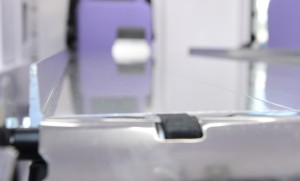 Design goals have to be reached in compliance with the international standards EN1789 and EN1865; essential elements to consider when planning the patient compartment. The stretcher support could solve a lot of problems and create space which previously didn’t exist. The device has to be compliant with the EN1789 and EN1865. The stretcher support must therefore also resist to 10G and 20G force. It must ensure all safety requirements, so we cannot consider having any sharp edges or angles.
Design goals have to be reached in compliance with the international standards EN1789 and EN1865; essential elements to consider when planning the patient compartment. The stretcher support could solve a lot of problems and create space which previously didn’t exist. The device has to be compliant with the EN1789 and EN1865. The stretcher support must therefore also resist to 10G and 20G force. It must ensure all safety requirements, so we cannot consider having any sharp edges or angles.
Last but not least, ambulance stretcher support provides a move that will be comfortable for the patient
When you are planning your new ambulance, you have also to consider patient comfort. Every day you’ll get a patient that complains! The stretcher support certainly will need an innovative suspension system to increase patient comfort. Air-suspension systems are frequently used. A product like the Spencer BOB – has an electronic oleo dynamic system, that gives the correct tension to the springs to prevent any stressful movements which as we all know can promote nausea and sickness during transport.


